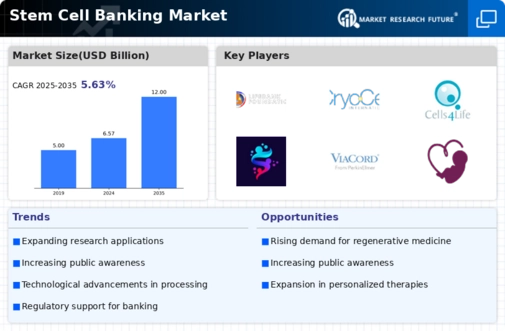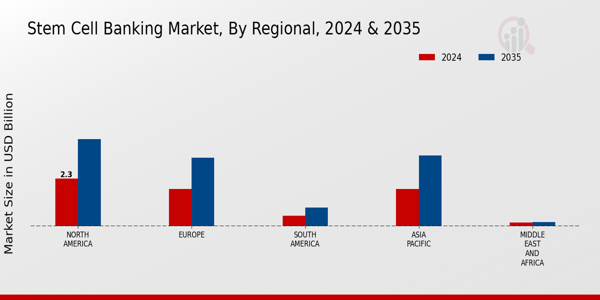Market Analysis
In-depth Analysis of Stem Cell Banking Market Industry Landscape
The demand for safe storage facilities for these invaluable biological materials is driven by market forces; thus market dynamics changes too.The therapeutic ability that lies within one’s own body cells has made the scope under which they can be used quite broad.It leads to increased demand for reliable banking services when scientific research uncovers new therapeutic uses for stem cells, thus emphasizing the necessity of efficient and secure storage solutions.
The stem cell banking market dynamics are significantly affected by the regulatory environment. Stem cells research have stringent regulations on how they should be collected, processed and stored in order to ensure ethics are followed during their handling. Trust between healthcare professionals and individuals who opt for stem cell banking services emanates from compliance with regulatory standards that govern the operation and development of stem cell banks. Therefore, conformity to such guidelines influences market dynamics through shaping the available stem cell banking alternatives’ landscape in terms of its safety or integrity.
Presence of a variety of stem cell banks besides biotechnology companies determines competition within this sector. The position of banks within the industry is determined by factors like storage fees as well as processing capabilities, accreditation among others. In addition, innovation comes about through collaborations, partnerships, and industry-specific initiatives that shape trends within this sector thereby influencing various stem cell banks available today.
Research collaborations and clinical studies are fundamental to the advancement of technological capabilities within stem cell banking, addressing emerging clinical requirements. Participation in science recreates understanding in basic cell biology, application of therapy, and storage conditions. Advancing through research initiatives is essential for the improvement of stem bank practices which respond to the latest scientific facts. Stem cell banking market is also influenced by personal medicines and a growing awareness about family cord blood banking. Families opting to bank their children's cord blood for potential future medical use contribute to market preferences aligned with personalized and familial health strategies. The emphasis on individual derived autologous stem cells emphasizes the importance of personalizing this kind of banking. Public perception and educational schemes concerning benefits from stem-cell-banking contributes to marketing growth. Although not conclusive it helps healthcare professionals as well as expectant parents or general public understand possible applications of stored ones leading to informed choices made and proactive approaches towards healthcare management. Also, changing customer preference in relation to improved storage and processing capacity has an impact on market dynamics for stem cells banks. Trends focus on selecting banks that provide high-end facilities such as state-of-the-art equipment due to continuous improvements through technology thus raising quality of stored cells. These preferences contribute to market trends aligned with cutting-edge and reliable stem cell banking solutions.











Leave a Comment